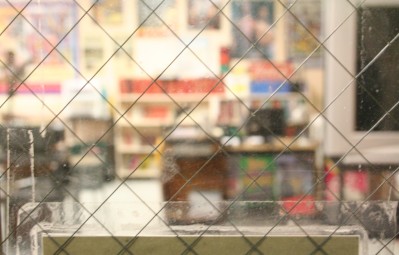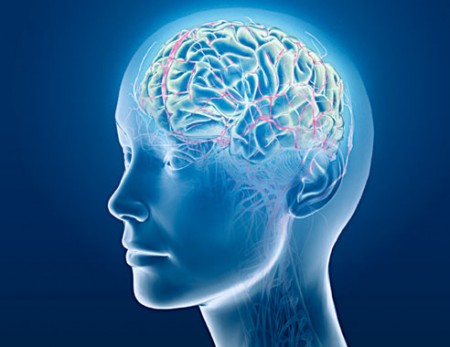Part 4 - Peek Inside a Classroom: José
originally published on his blog: http://lucidwitness.com/2015/09/25/peek-inside-a-classroom-jose/
José was one of the calmest, quietest, most peaceful boys in the classroom. The kind of boy everybody loves.
José had thick, coal-black hair and matching black-marble eyes. He was always in an immaculate, crisp school uniform, often with a warm sweater around his sturdy frame. José’s family never adjusted to the cool northeastern temperatures in winter. They were from a small town in Panama, emigrated here shortly before José’s birth and now live in a quiet, clean, working class neighborhood.
José lived with two cousins, an uncle, an aunt, Mom, baby brother and sometimes Dad. He had been an only child until October of second grade, when his brother was born.
José is very proud of “his country”, Panama. His passion is soccer. He loved everything about soccer. If there was a televised soccer game involving Panama, José knew all about it.
José’s strong academic performance had begun in first grade. His reading level in September, at the start of second grade, was about half-year ahead, in the top 10% of the class and his math results were in the top quarter of the class.
Looks great so far, right ?
.
WHEN YOU LOOK INSIDE A CLASSROOM THERE ARE SOME THINGS YOU CAN NOT SEE

As the year continued on into late October/November, José’s academic pattern emerged to be wildly inconsistent. A student’s literacy results are usually in a narrow range, but José’s pattern was wild swings between ‘A/B’ and ‘D/F’, week by week.
José’s behaviors were more than ‘daydreaming’: he was detached, forgetful, ‘stunned’ even, with muted responses, low energy, chronic fatigue and more – all in context of his fluctuating academics.
.
Public Health Data
Childhood trauma is the response of overwhelming or helpless fear, or terror. Specifically, it is a response to abuse, neglect, to a missing parent, or a household which includes violence, mental illness, or substance abuse. Other childhood traumas can include experiences with community violence, or ethnic oppression, and more.See more detail at “Common Sense” on varying rates of trauma from 22% up to 45+% of all children. From idyllic middle class suburbs, to rough urban settings. Childhood trauma is no respecter of demographics.

The child who is hyper-aroused, hypervigilant, aggressive and disruptive is often the ‘Poster Child’ for abuse. They also get the attention in a classroom setting where learning for 30 students is the goal. See “Jasmine” at “Peek Inside a Classroom“.
However, children respond to trauma in a wide spectrum of defensive behaviors(as in “fight, flight or freeze”). Besides hyper-arousal, one different defense to trauma is “dissociation”. See here, and here, and Sandra Bloom p. 41-49, Cozolino (especially Chapter 14), and Levine and Kline (especially Chapter 3). José’s behaviors were compliant, but stunned or “disconnected”, “in a fog”. The dissociation defense spectrum can continue all the way to catatonic and even "multiple personalities".
In any case, it is physiologically impossible to learn for children in the midst of complex trauma.
.

Dissociating students are much more likely to be unsupported, or even completely unnoticed. Even when teachers (I have been guilty too) are trained and are able to notice “José”, it can be tempting to ignore him, and take advantage of the calm classroom to teach the other 30 children. “Roberto” (Click HERE) is another example of a student in dissociation. “Danny” (Click HERE) exhibited behaviors of both hyperarousal and dissociation.
I had suspicions about deeper, life issues for José, but I wanted to hear directly from José. In an empty classroom, in private I reassured him that he was not in trouble (the location and the message and tone were all part of establishing “safety”). I continued by sharing that I was surprised at his score on the latest reading test, because I knew from his other tests that he was able to do the work. I mused that sometimes when things change at school, that’s because they had changed at home first. I wondered out loud if everything was okay?. . .
José hesitated, but eventually shared that he “missed dad” (even though José described him as a “rough man”). “He doesn’t come home any more”. Instead dad goes to José’s aunt’s (dad’s sister’s) house in the evenings “because dad says ‘it’s more fun there. He thinks it’s boring at home’”. José believed final divorce was near.
José hung his head, and he broke into tears at this point. At first he was turned away and “hidden”. A confused, powerless, embarrassed posture. I hugged him lightly and said ‘it must be hard’. He nodded and went silent. I decided to wait to talk with Mom till we could talk in person. I knew that children’s versions of their parent’s lives can be hazy and incomplete.
.
DISSOCIATION: One more thing you can not see when you look in a classroom.
.
.
Relation-based, on-going, or “Complex”, trauma is the most heinous type of trauma (versus ‘environmental-based trauma, and one-time events). See van der Kolk pgs. 392-396.
Complex trauma occurs during childhood, within the family system: caregivers who are accountable for protection and love. Instead, chronic, overwhelming fear and pain, and no escape: incest, physical abuse, witness to intimate partner violence, are examples. As another example, Divorce, no matter how “friendly”, rocks the child’s world. A terrifying loss of security and love to young children. Results of Complex Trauma impair least seven domains, as detailed at Cook, et al,(2005).
.
.

Back to José: his mom returned the following week and abruptly announced that “all that stuff we talked about” last week was “fine” now: the father was not an issue. José was “wrong” according to her. She was curt, did not want a discussion, turned and left quickly. It happens too often. Guards are down, things are shared, but then later denied.
So, I planned to be exceedingly clear at upcoming Report Card conferences about what I was still seeing at school, in spite of Mom’s denial. I had every intention of being brief and crisp (and probably too cold). I was frustrated about lack of attention to José, and his pain and the secondary status of his learning, after all, I was his teacher, and (I felt), his advocate.
‘
Some adults dismiss the impact of adverse events (ACEs) on children, thinking “they’re too young to understand anyway, or “they’re young, they’ll get over it”.
Actually, this common adult perspective is exactly wrong. It is precisely BECAUSE the child is “too young” that their ability to defend against intense stress and trauma is far weaker and the results are far worse than an adult exposed to the same event.
.

Children’s brains are still developing: 1) Their brains are not fully ‘wired’. The immature brain is “use-dependent”, meaning it develops in areas that are used, and therefore more vulnerable to mis-wiring, or mis-developing, from chronic defensive usage. See early brain development p.3-6, 2) The chronic, powerful chemical baths of cortisol and adrenaline during “fight or flight” cause direct damage to still-developing brain cells, and 3) children’s frontal cortices are not yet experienced in processing and logically understanding the source of fear. Their immature coping mechanisms are easily undermined and their sense of helplessness or powerlessness is relatively greater than an adult.
So, over time, unaddressed trauma changes the physical structure and functioning of children’s brains and will lower the quality of their lives and likely result in early death. Levine and Kline p. 4, Perry p. 245, Perry (again), and the CDC Adverse Childhood Experience (ACE) research.
José’s mom arrived for our conference cuddling a new infant, José’s 5 month old brother. I shared preemptively, and somewhat formally, that José’s academic performance was now distinctly below average.
I had struggled to give him “C”s. I also shared that José’s performance continued to be wildly erratic. I described the swings as clear evidence that he still has very high ability. Students don’t just have ability "on occasion".
Erratic academics often mean there is “something ‘inside him’ troubling the student”. I wondered aloud if there was anything she could think of?
I stopped. The room was silent.
.
A dependent, child can not be known in a vacuum. The child is a dependent member of a ‘family system’. See summary of M. Bowen (in Louis Cozolino; Chapter 3). When one person in the system is impacted by trauma, all others are impacted in relation to that member. José (and mother) were impacted by a variety of insecurity and abandonment issues, related to his father. The divorce was a pending fracture to their system, and even more in José’s eyes, a pending earthsplitting re-definition of his entire world. José is not unusual, given divorce rates in our country near 50%…
.

Warning: It suddenly became overpoweringly emotional. An intense, flooding release. Mom struggled to share through heaving sobs. Her wounds were obviously still open and tender. First she shared that, yes, there was something bothering José “inside.” The phrase "inside of him" had seemed to translate powerfully.
Suddenly, Mom blurted, “Yes, ‘inside’ José is still dealing with the death of his aunt, Maria, his Dad’s sister.” Maria had died about only 8 or 9 months ago, in mid-summer, right before school. She had been José’s favorite aunt. Apparently their love and affection were mutual.
.
DISSOCIATION: One more thing you can not see when you peek in a classroom.
.It got more intense. Mom continued: Maria suffered painfully and ultimately died from burns covering 100% of her body. . . the result of a gas leak, explosion, and fire. Maria’s brother, José’s dad, was working on the same street, heard the explosion which caused the fire, heard his sister’s screams and was completely powerless to help.
Mom shared that Dad then went “deep inside himself”, completely shutting out the entire family. Mom described dad as ‘totally unavailable’ for two to three months – increasing abandonment fears for the rest of the family.
Yet, to this day, José has never made mention of Maria or her death to me.
.
Mom herself was close to Maria. Grieving and preoccupied, she tried to disconnect by wrapping herself in preparations for her baby-to-come. The baby came in October, a brand new “attraction” in the family. Mom acknowledged that she also dramatically cut time and communication with José. Her words, translated; “ignored”, “forgot”.
Even so, José never mentioned his little brother to me. He seems to have no affect for him. If José refers to him at all, it is only by his ‘position’, “my baby brother”. He doesn’t speak his name.
At this point in the report card conference (yes it was still the same conference). We were all in tears.
.
.
Successful education is centered on José —
not on José’s test scores.
Trauma Informed Education
José’s academics must be understood holistically. José can not and will not “just get over it.” The neurobiological impacts of trauma are real. The physical and emotional impacts over time of “stuffing” or denying hurt, tension and anger can lead to explosive results.José, defending himself “invisibly”, in dissociation, needs every bit as much accomodation as Jasmine does in her hyper-aroused defense. They simply defend themselves differently in “fight or flight”.
.
Both defenses, hyper-arousal and dissociation, block equal access to a child’s education.
Alarmingly, schools today are not trauma-competent, not even trauma-informed. “José”s are still not accomodated.
There is no excuse.
Conversely, a trauma-informed education paradigm requires: a) explicit acknowledgement of childhood trauma, b) screening students, c) training teachers and staff, and d) creating “safety” across the learning environment.
Crucial investments towards safety include appropriate class-sizes, with limits on trauma-impacted children per classroom. Additionally, dedicated appropriate space for children to de-escalate is needed, as well as on-site nurses and counselors; counselors, who build safe, trusting relationships with the children and families. (See “Common Sense” and here and here and here for more detail on some “beginnings”.)
.
 .
.Presently, the education “reform” environment has resulted in the opposite — disinvestment — in Public Education. In our own city the total local/state/federal funding is described as an “Empty Shell” Budget. How long will we keep trying to do what can’t be done?
Further, reformers’ paradigm, which focusses on education as a single ‘silo’ of only one dimension(standardized test results), blocks our view of the whole child. See “Failing Schools or Failing Paradigm?”
Years ago, the Department of Justice, the CDC and past Surgeon Generals identified childhood trauma as a “national crisis”. The CDC says trauma impacts are critical to understand.
Trauma-competent schools with equal access to education are a moral and legal right for children. . . now.
We have a right to be impatient and angry!
.

.
What can be done ? Call, write or email your legislators today! Or share the link for the Common Sense blog post.
Contact info and a sample note is HERE at the end of the Common Sense blog post.
(Note: Names of all people and places are pseudonyms, in a true narrative.)
I still flashback now, when I see a soccer ball . . .

No comments:
Post a Comment
Note: Only a member of this blog may post a comment.